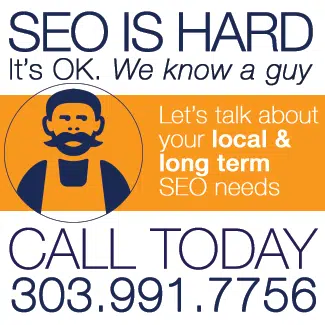Your title tag is often the very first thing people notice in Google results—it’s your headline, your welcome sign, your chance to say, “Yes, you’re in the right place.” A tiny tweak here could boost your clicks and help your business shine online.
Managing all these digital details can be time-consuming when you are focused on running your business. The Affordable Web Guy specializes in creating and maintaining professional websites for small businesses, handling foundational SEO elements like title tags so you do not have to. Visit The Affordable Web Guy to see how a solid website strategy can help your business grow.
1. Keep It Short and Sweet: 50–60 Characters
Google usually trims off titles that run too long. Aim for 50–60 characters so your full message stays visible. Try front-loading the most important words so they don’t get cut off. Instead of “Call Our Company for Emergency Plumbing in Springfield,” lead with “Emergency Plumbing in Springfield.”
👉 Want a deeper dive? Check out our website audit service where we test your on-page SEO—including title tag performance.
2. Put Crucial Keywords at the Start
People—and search engines—scan the beginning of your title first. If you serve “Denver Lawn Care,” leading with that tells users right away, “Yep, we’ve got what you need.” Then, tuck your business name on the end: “Lawn Care in Denver | GreenLeaf.”
For background, Moz has a comprehensive guide to title tags that confirms this approach.
3. Make Every Page Unique
Think of each page as its own story. If all your titles are the same, no one knows which page does what—not you, not Google, not your visitors.
-
Service page: “24/7 Drain Cleaning in Springfield | Plumb Perfect”
-
Blog post: “5 Quick Fixes for a Slow Drain | Plumb Perfect Blog”
This clears up confusion and helps each page stand on its own.
4. Write Titles People Actually Want to Click
Your title isn’t just SEO—it’s a mini-ad. A quick promise like “Get a Greener Lawn in 7 Days | Pro Lawn Care” beats a flat “Lawn Care Services” headline.
👉 Not sure what’s working? Our Highlands Ranch web design page shows how we craft service titles that spark clicks while staying SEO-friendly.
5. Use Your Brand Name Thoughtfully
On most pages, save your name for the end: “Emergency Plumbing in Raleigh | Peterson Plumbing.” But on your homepage or “About” page? Put your name first—it’s where recognition matters most.
6. Skip Keyword Stuffing—Write for Real People
Repeating “Roof Repair” five times in your title feels spammy. Instead, write something simple and human: “Roof Repair in Austin | Reliable & Affordable.”
For proof, see Search Engine Journal’s breakdown on why keyword stuffing hurts SEO.
7. Choose Clean Separators That Look Good
Separators help readers scan quickly:
-
Pipes ( | ) for equals → “Lawn Care | GreenLeaf”
-
Dashes ( – ) for hierarchy → “Furnace Repair – HVAC Experts”
-
Colons ( : ) for explanation → “DIY Landscaping: A Beginner’s Guide”
Just pick one style and stick with it—consistency looks professional.
8. Update Your Titles Regularly
SEO isn’t “set and forget.” Trends shift, services evolve, competitors change. Review your titles every quarter with Google Search Console. Look for pages with high impressions but low clicks—those titles are prime for a refresh.
Quick Comparison Guide
|
What to Do |
Why It Matters |
|---|---|
| Stay within 50–60 characters | Prevents truncation in search results |
| Start with primary keywords | Boosts recognition and click-through |
| Make titles unique per page | Clears confusion and helps indexing |
| Write clickable, benefit-driven titles | Encourages real user engagement |
| Include brand name strategically | Enhances recognition without clutter |
| Avoid keyword stuffing | Builds trust and improves readability |
| Use clean separators consistently | Keeps titles professional and easy to scan |
| Audit and tweak titles often | Keeps content fresh, relevant, and competitive |


Leave A Comment